Type I interferon transcriptional network regulates expression of coinhibitory receptors in human T cells
- PMID: 35301508
- PMCID: PMC8989655
- DOI: 10.1038/s41590-022-01152-y
Type I interferon transcriptional network regulates expression of coinhibitory receptors in human T cells
Abstract
Although inhibition of T cell coinhibitory receptors has revolutionized cancer therapy, the mechanisms governing their expression on human T cells have not been elucidated. In the present study, we show that type 1 interferon (IFN-I) regulates coinhibitory receptor expression on human T cells, inducing PD-1/TIM-3/LAG-3 while inhibiting TIGIT expression. High-temporal-resolution mRNA profiling of IFN-I responses established the dynamic regulatory networks uncovering three temporal transcriptional waves. Perturbation of key transcription factors (TFs) and TF footprint analysis revealed two regulator modules with different temporal kinetics that control expression of coinhibitory receptors and IFN-I response genes, with SP140 highlighted as one of the key regulators that differentiates LAG-3 and TIGIT expression. Finally, we found that the dynamic IFN-I response in vitro closely mirrored T cell features in acute SARS-CoV-2 infection. The identification of unique TFs controlling coinhibitory receptor expression under IFN-I response may provide targets for enhancement of immunotherapy in cancer, infectious diseases and autoimmunity.
© 2022. Springer Nature America, Inc.
Conflict of interest statement
Competing interests
D.A.H. has received research funding from Bristol-Myers Squibb, Sanofi, and Genentech. He has been a consultant for Bristol Myers Squibb, Compass Therapeutics, EMD Serono, Genentech, and Sanofi Genzyme over the last three years. Further information regarding funding is available on:
Figures

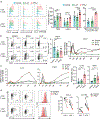
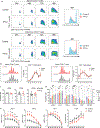
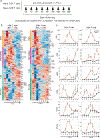
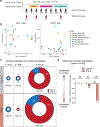
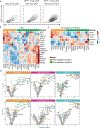

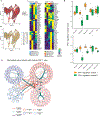


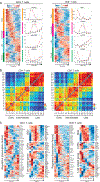

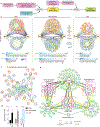


Update of
-
Type I Interferon Transcriptional Network Regulates Expression of Coinhibitory Receptors in Human T cells.bioRxiv [Preprint]. 2020 Oct 31:2020.10.30.362947. doi: 10.1101/2020.10.30.362947. bioRxiv. 2020. Update in: Nat Immunol. 2022 Apr;23(4):632-642. doi: 10.1038/s41590-022-01152-y. PMID: 33140047 Free PMC article. Updated. Preprint.
-
Type I Interferon Transcriptional Network Regulates Expression of Coinhibitory Receptors in Human T cells.Res Sq [Preprint]. 2021 Jun 8:rs.3.rs-133494. doi: 10.21203/rs.3.rs-133494/v1. Res Sq. 2021. Update in: Nat Immunol. 2022 Apr;23(4):632-642. doi: 10.1038/s41590-022-01152-y. PMID: 34127967 Free PMC article. Updated. Preprint.
References
-
- Curtsinger JM, Valenzuela JO, Agarwal P, Lins D & Mescher MF Type I IFNs provide a third signal to CD8 T cells to stimulate clonal expansion and differentiation. J Immunol 174, 4465–4469 (2005). - PubMed
-
- Le Bon A et al. Direct stimulation of T cells by type I IFN enhances the CD8+ T cell response during cross-priming. J Immunol 176, 4682–4689 (2006). - PubMed
References associated with the Methods section
-
- Bojnordi MN et al. Differentiation of Spermatogonia Stem Cells into Functional Mature Neurons Characterized with Differential Gene Expression. Mol Neurobiol 54, 5676–5682 (2017). - PubMed
Publication types
MeSH terms
Substances
Grants and funding
- I01 BX004661/BX/BLRD VA/United States
- R01 NS045937/NS/NINDS NIH HHS/United States
- P01 AI039671/AI/NIAID NIH HHS/United States
- U19 AI133524/AI/NIAID NIH HHS/United States
- R25 NS079193/NS/NINDS NIH HHS/United States
- P50 CA121974/CA/NCI NIH HHS/United States
- U19 AI089992/AI/NIAID NIH HHS/United States
- R01 AI144166/AI/NIAID NIH HHS/United States
- P01 AI073748/AI/NIAID NIH HHS/United States
- U01 HL145567/HL/NHLBI NIH HHS/United States
- R01 HL141852/HL/NHLBI NIH HHS/United States
- R01 NS030843/NS/NINDS NIH HHS/United States
- P01 AI056299/AI/NIAID NIH HHS/United States
- R01 HL127349/HL/NHLBI NIH HHS/United States
LinkOut - more resources
Full Text Sources
Other Literature Sources
Medical
Research Materials
Miscellaneous

